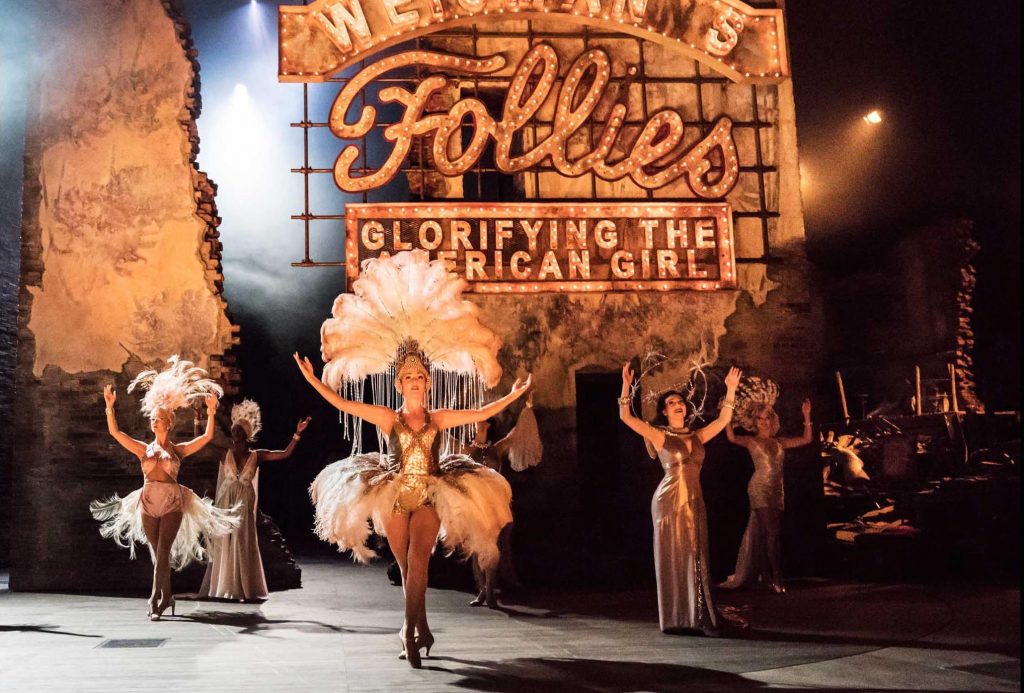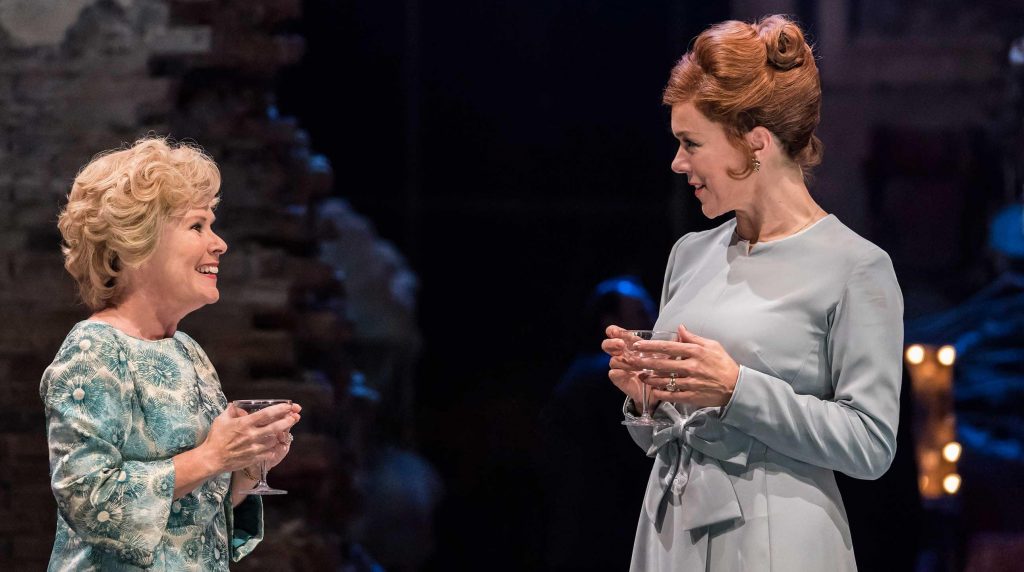Janie Dee leads delightful revival of The Boy Friend ★★★★

Even when it was first performed in 1954, Sandy Wilson’s The Boy Friend appeared to hark back to a bygone era, a time of flappers and musical comedies, that preceded the then modern muscular realist musicals like Oklahoma! That it still appeals 65 years later suggests that the secret of its longevity is that it is set not so much in the past as in a world of its own.
This is a world where rich young English ladies attend a finishing school under the benign supervision of Madame Dubonnet, in which English reserve melts in the warmth of the Mediterranean sun and the charms of the French, and in which a little deception and misunderstanding are mere ripples on a smooth voyage to romance and happiness. Put simply, its appeal is that it offers us a utopian world of innocence.
There isn’t much plot to tell you about. A young heiress wants to be loved for herself not her money. She meets a poor delivery boy, they fall in love, but he’s not all he seems. Don’t worry it all works out. In fact, it all works out for everybody’s love lives.
Sandy Wilson could have tried harder to incorporate some less predictable twists or more plausible predicaments but that’s not the point. The point is, to escape to this fantasy world for a couple of hours and bathe in the brightness of the song and dance.
Romantic jaunty and poignant song and dance
Mr Wilson’s delightful songs aspire to Cole Porter and, while not actually reaching the great man’s heights, there is a lot of humour in lines like ‘The mere idea of living in a palace is, so full of fallacies’. Memorable numbers include the romantic I Could Be Happy With You, the jaunty It’s Never Too Late To Fall In Love, an unexpectedly poignant Poor Little Pierette and of course The Boy Friend. A quick word of praise here for Simon Beck and his live orchestra for driving the show at a jolly pace.

In the intimate space of the Menier, the kicks are so high and the lifts bound so far across the stage that people in the front row may need to duck. Among the many glorious dances, there’s an infectious Charleston performed by Gabrielle Lewis-Dodson and Jack Butterworth (both talented performers to watch out for in the future) and an amusing tango in which the couple come to blows while maintaining the moody moves.
The splendid chorus lines extend to the girls speaking in unison as they flirt with their potential husbands. In fact, given that choreographer Bill Deamer is listed as associate director, it is hard to say where his choreography ends and Matthew White’s direction begins. But all praise to Mr White for honouring the gossamer lightness of this musical while introducing enough down-to-earth physical comedy (with homage to vintage TV) to keep a contemporary audience happy. For example, when the stern French maid Hortense, played with gusto by Tiffany Graves, describes the demureness taught at the school while leaving her legs wide apart as she crosses them. Shades here of Kenny Everett.
Adrian Edmonson squeezes every laugh he can
There’s a touch of Benny Hill when Adrian Edmonson, once a Young One, appears as an old English lord, whose lechery is thwarted at every turn. It’s behaviour we wouldn’t expect to find funny anymore but in the world of The Boy Friend, even lechery is innocent fun and Mr Edmonson squeezes every laugh he can out of it. He even eats an ice cream lasciviously.
And he is just one of a terrific cast brought together in this Menier production. It’s led by one of the great musical stars of the older generation Janie Dee who steals every scene she’s in with her ‘Allo ‘Allo style French accent (another blast from the TV’s comedy past) and her knowing smile, especially when she seeks to rekindle an old romance with ‘Petit Percy’ played by an appropriately starchy Robert Portal.
And it’s a pleasure to see a star of the new generation Amara Okereke in the lead role of Polly Browne. Her sweet soaring voice and subtle acting convey both the strength and vulnerability of a young woman looking for love. Dylan Mason plays her suitor with fresh faced innocence.
Paul Farnsworth’s simple Mediterranean blue set is entirely appropriate and his 1920s style costumes are bright, elegant and fun.
You won’t come away from The Boy Friend feeling you’ve had a substantial meal but you will have enjoyed a superb sorbet.
The Boy Friend is performing at The Menier Chocolate Factory Theatre until 7 March 2020.

